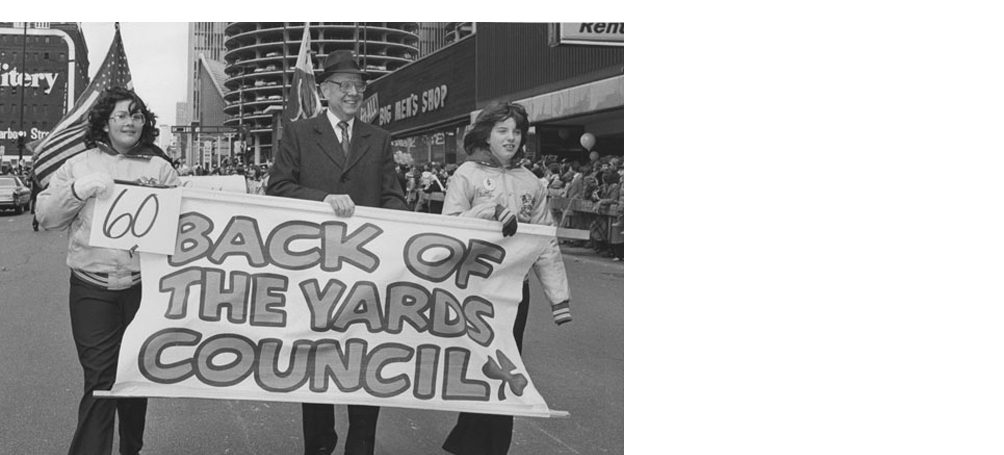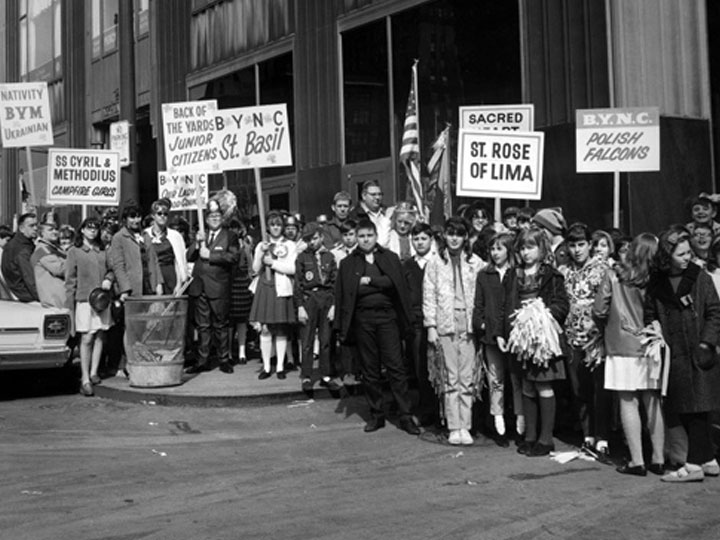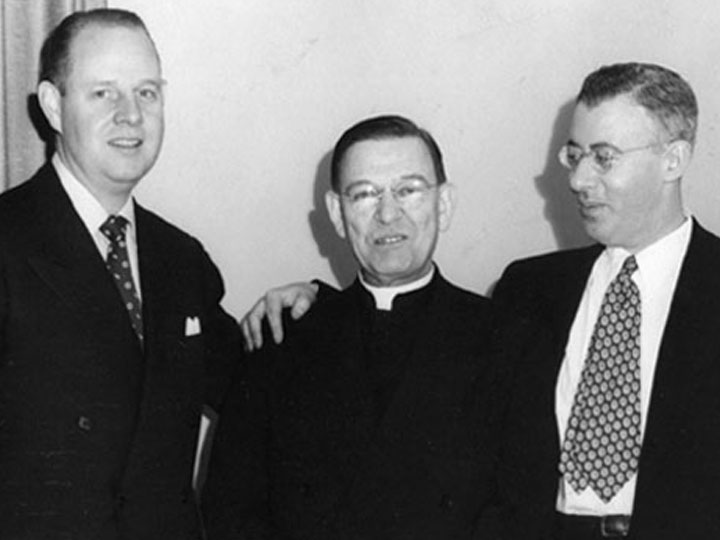
History
The Back of the Yards neighborhood was originally part of the Town of Lake until its annexation by Chicago in 1889. The expansion of the neighborhood began in the mid–nineteenth century with the establishment of the Union Stockyards and the concentration of railroads in the area. By 1900, the neighborhood had been transformed into a series of Slavic enclaves, dominated by Poles, Czechs, Lithuanians, and Slovaks, largely composed of workingman’s cottages.
Each of these ethnic enclaves had their own church and school, usually housed in the same building with a head priest imported from the motherland as a way to stay connected to their heritage. In most cases, these enclaves also had men’s social clubs, women’s leagues, and sports associations. Prior to the Great Depression, these enclaves handled their population’s problems internally.
When the Great Depression hit, poverty and need were so widespread that the enclaves simply could not cope within their individual ethnic communities.


It was this environment that created a need for an organization like the Back of the Yards Neighborhood Council. The BYNC was formed in 1939 by Joseph Meegan, the superintendent of Davis Square Park, and Saul Alinsky, a colorful, professional organizer.
At this point, the BYNC was essentially a collaboration of all the individual ethnic schools, churches, and various social clubs. The Board of Directors was elected by an annual “Community Congress”, where all these groups were represented. The BYNC motto, “We the people will work out our own destiny”, reflects what it was created to accomplish.
As mentioned earlier, the environment created by the Great Depression demanded a unified force to work for change in the neighborhood. Through advocacy and program development, the BYNC became that force. Notable accomplishments at this stage were securing WPA dollars for the neighborhood and the creation of a school lunch program that became a model for the nation.
In the early years, the BYNC was a confrontational, anti-establishment organization that often conflicted with the Stockyards owners and the government.
Over time, both the community and the organization changed. The community remained Slavic for until the 20th Century, but by the mid-70’s it was a predominately Hispanic neighborhood with a large number of African Americans, as it is today.
The BYNC also responded to the demographic, social, and economic changes of the neighborhood. We have substituted an emphasis on community and economic development for Alinski’s confrontational methods, working closely with local businesses and elected officials to improve the conditions in the neighborhood and create our own community programs.
When Joseph Meegan retired in 1982, Patrick J. Salmon, who was then the Director of the Juvenile Welfare Program, succeeded him as president of the BYNC. Patrick Salmon’s tenure as President of the Council and his legacy are evident in the Yards Plaza, an $850 Million Shopping Center on 47th and Damen, and the creation of the Stockyards Industrial Park on the site of the old Union Stockyards – both projects that he helped bring to the community. Patrick Salmon served as President of the BYNC until his retirement in 2007. Unfortunately, Mr. Salmon died of pancreatic cancer in August of 2008.
Patrick Salmon was followed by the current President, Craig Chico. Mr. Chico has deep roots in the Back of the Yards community and years of experience in community service.
For more information on the history of the Back of the Yards community and the BYNC, here a few good resources and book recommendations:
- Encyclopedia of Chicago article on the BYNC
- Encylopedia of Chicago article on the Back of the Yards
- Encyclopedia of Chicago article on the Union Stockyards
- “The Back of the Yards: the Making of a Local Democracy” by Robert Slayton
- “Pride in the Jungle” by Thomas Jablonsky
- “Back of the Yards: Images of America” by Jeannette Swist
Also, please visit our media page for a video on our history an an extensive gallery of historic photos.
